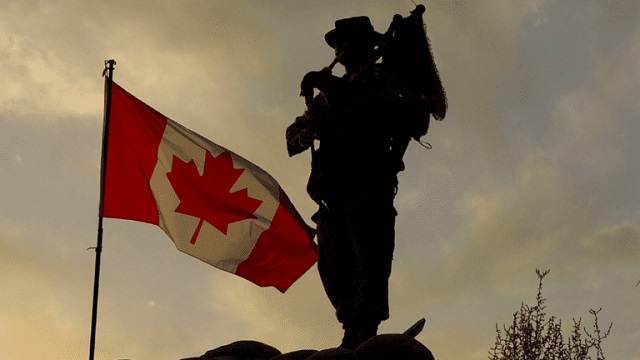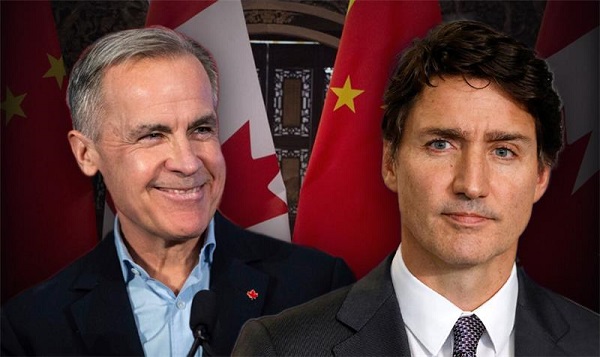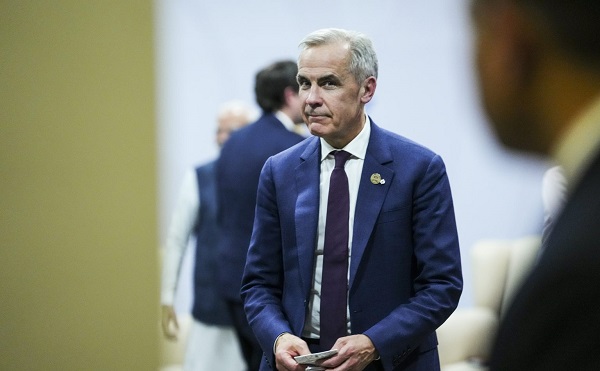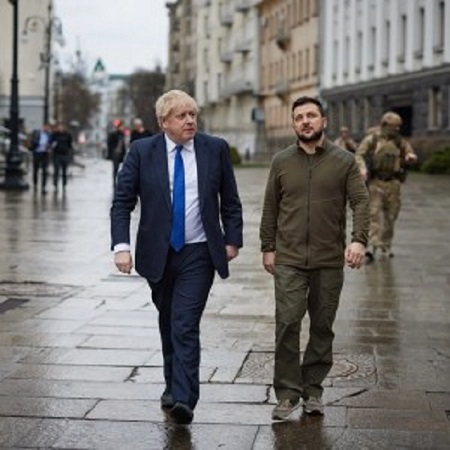armed forces
We can do more than just remember. Let’s actually support those who serve.

From the MacDonald Laurier Institute
By Richard Shimooka
Many veterans transition to civilian life feeling rudderless and alone and missing necessary support structures
Remembrance Day is the one time in the year that the lives and issues facing soldiers and veterans intrude into the public consciousness in any substantial way. Yet the image that is evoked is heavily based on the Second World War and Korean War experiences—conflicts that have directly affected a dwindling generation of individuals. Meanwhile, the lives and challenges of our current generation of soldiers and veterans are very different and not well understood.
The reality can be grim. A 2014 Statistics Canada Study showed that 48 percent of Canadian Armed Forces (CAF) members will experience a major mental health condition or alcoholic abuse in their lifetime. While currently serving personnel do not see an increase in suicide rates relative to the population, the suicide rate for male veterans after their release is 50 percent higher than the general population, 200 percent higher for female veterans, and 250 percent higher for male veterans under the age of 25.
These sorts of statistics, backed up by anecdotal evidence, cast a dour light on their overall military experience. I think the problem can be distilled down to a series of lies that exist at the heart of Canada’s relationship with its military members.
The government asks members of the Canadian Armed Forces for unlimited liability, and in return, CAF members trust the government to provide them with the tools to do their jobs and the policies and systems to take care of them in their most vulnerable times. This social contract is at the core of military service—and the government is essentially lying when it claims that it is upholding its side of the agreement. And due to that failure, soldiers often suffer a lifetime moral injury as a result.
First, it is fairly evident that military personnel are not being provided the resources required to carry out their jobs properly. In procurement, for example, considerations such as “social license” and “industrial and technical benefits” edge out the needs of soldiers, often leaving them with inadequate capabilities to achieve their missions. It often leaves soldiers across the CAF feeling disrespected despite their ongoing sacrifices,
But this is only one part of the issue. The CAF and Veterans Affairs Canada’s (VAC) personnel policies towards current and former military members are simply inadequate. It takes a certain type of person to join the CAF and remain in service for any length of time. In most cases, those very skills, knowledge, and work habits that are in demand within the CAF today are also highly sought after in the Canadian workforce—and often at significantly higher pay scales than what is offered within the military. CAF members are often shuttled to remote bases in places like Cold Lake, Shilo, or Oromucto, then sent on months-long deployments abroad. The continued outsourcing of key military benefits, such as housing and movement grants, and the inability to have a credible grievance mechanism, have produced a military experience that varies wildly from soldier to soldier in an already complex and stressful job.
Furthermore, spouses and families often bear the brunt of the challenging military lifestyle. Many of Canada’s bases are located far from major metropoles. Remember, with the CAF requiring more highly trained soldiers, it is likely that their spouses also have similar educational and employment skill sets—ones that cannot be met in remote military towns. While official statistics are scarce, there is some evidence suggesting that divorce rates for current and former military members are significantly higher than in the general population.
Most destructive is just how inept the government’s personnel management policies are. First, systems for overseeing current members and veterans employ antiquated data management systems, which creates barriers to accessing services.
This brings us to a broader point: the relationship between the bureaucracy and soldiers and veterans is not a harmonious one. At best it can be described as adversarial. At every step, current and former military members have to prove their eligibility for programs to skeptical public servants and/or contractors. They must become records packrats as they never know when a key piece of information will become critical to proving the validity of their claim.
The focus of the “system” seems like it is less there to assist individuals in need and more there to prevent the almost minuscule possibility that fraud may occur. This lack of trust manifests itself in so many different ways, altering health benefits for dependents, even for the widows/widowers of soldiers and veterans, cost of living rebates, and more.
Furthermore, even the programs and policy alternatives that are available are deliberately left unpublicized, perhaps in a misguided effort to keep departmental costs down. It is often through word of mouth or online communities that the existence of these policies (and how to access them) is disseminated amongst veterans or serving members. This illustrates the reality of the situation and the lie that the government is doing its best to help current and former military members. Rather, it actively works against them in some important instances.
Despite all of this, it can be surprising that so many members choose to remain in service to their country. Certainly, the higher calling that comes with public service is an important motivator: they strive hard to uphold their side of the social contract.
Another issue, though, is that there is also a “big lie” that current soldiers and veterans tell themselves to make it through: that everything is alright.
I can’t tell you how many allied personnel will rave about the relentless resourcefulness of Canadian military personnel. This is colloquially referred to as the “can-do” attitude. A culture of essentially getting things done regardless of the risk.
But there is more to it than that. Certainly, there was an element of masculinity that has inhibited soldiers from seeking help. Furthermore, the fears exist among personnel that acknowledging mental defects could impact their future service progression. The failure to repeal or mitigate Paragraph 98 (c) of the National Defence Act, which criminalizes self-harm, is one of several policies that stigmatizes those who suffer mental health episodes.
At its root, the broader CAF culture explains some of the relationship dynamics between superiors and subordinates. If soldiers are conditioned to not express how they feel, it makes it difficult for them to then turn around and be effective at dealing with the issues within their organization. We can laud the perceptive leaders who intrinsically understand the corrosive effect these issues have on their subordinates’ lives and try to rectify them, but it is a challenge for many in command positions because they have been conditioned within this culture to avoid these questions.
Moreover, there’s the pervasive reality that the CAF requires a unique culture to undertake its primary task of providing for the security and defence of Canada and its interests. As I mentioned in a previous column, the CAF’s culture is the glue that holds the force together in extremely difficult operations. Yet that focus on conformity can also result in destructive effects on some members’ psyche.
Given all of these considerations, it is not at all surprising that soldiers essentially lie to themselves about their situation in order to get through each day. Fortunately, they have a clear sense of purpose while serving their country; often, however, veterans do not. Many transition to civilian life feeling rudderless and alone, without the support structures that allowed them to operate at high levels while in the service. Even worse, some veterans are deliberately made to feel the burden of a system that was created to treat service-related injuries.
In the end, usurping these lies is not insurmountable, but it will require dedicated time, effort, and resources to overcome them. In short, robust political support across all parties has been lacking for many decades. Overhauling the relationship will have practical benefits that will go far beyond just meeting the needs of soldiers and their families. It will go a long way in addressing the retention and potentially the recruitment crisis that has deeply affected the CAF for the past decade.
But aside from that, it is just the morally right thing to do, and that really should be the guiding position for any policy in this area. Beyond just taking the time to remember their sacrifices for one day once a year, providing tangible improvements to the lives and working conditions of soldiers and veterans would be a meaningful way to thank them for their service.
Richard Shimooka is a Hub contributing writer and a senior fellow at the Macdonald-Laurier Institute who writes on defence policy.
armed forces
Canada At Risk Of Losing Control Of Its Northern Territories

From the Frontier Centre for Public Policy
By Gerry Bowler
Canada has left the North wide open to foreign powers eager to grow their Arctic foothold
Canada is in danger of losing the Arctic because Ottawa has ignored the North for far too long.
The Canadian North makes up 40 per cent of our land mass and includes more than 19,000 islands in the Arctic Archipelago. Yet only about 120,000 people live across this enormous stretch of wilderness. Canada took control of the region in the late 19th century through territorial transfers from the Hudson’s Bay Company and the British Crown, one of the largest land transfers in history.
For decades afterward, the North received little federal attention. The Second World War briefly changed that, prompting construction of the Alcan Highway to Alaska and bringing new airfields and telephone lines.
The Cold War, along with the threat of Soviet bombers crossing the Pole, led to multiple radar lines. Still, Prime Minister St-Laurent admitted in the 1950s that Canadian governments had treated the North “in an almost continuing state of absence of mind.”
John Diefenbaker’s Progressive Conservative administration tried to reverse that neglect. In 1958, he told a Winnipeg audience: “I see a new Canada—a Canada of the North! … We intend to carry out the legislative program of Arctic research, to develop Arctic routes, to develop those vast hidden resources the last few years have revealed.”
Plans for a research and industrial city in Frobisher Bay, new roads and railway lines and wide-ranging surveys were ambitious but ultimately unaffordable. In the years that followed, both Liberal and Conservative governments again set northern development aside.
Foreign interest, however, continued to grow. The Canadian Security Intelligence Service recently reported Russian and Chinese attempts at influence and subversion in our northern territories.
American governments over the past 20 years have shown serious interest in the region’s resources, which include significant oil, gas and mineral deposits, along with control of the Northwest Passage, a shipping route becoming increasingly accessible as Arctic sea ice recedes.
Canada considers those waters national; the United States, the European Union and at times China argue it is an international strait.
For all practical purposes, Canada has what amounts to no meaningful presence north of the tree line, leaving the field open to countries with far more ambition and far better-equipped forces.
Canada is in no position to defend its claims. We have no icebreakers capable of operating through the Arctic winter. We have no submarines that can work under the ice cap. We have no permanent air base for fighter jets.
And to cover two million square kilometres of Arctic territory, we have only 300 troops stationed there. The chance they could detect, let alone repel, a serious intruder is essentially zero. Without these capabilities, Canada cannot properly monitor activity in the region or enforce its sovereignty claims.
In the last federal budget, Ottawa announced a $1-billion Arctic infrastructure fund for new airports, seaports and all-season roads. Our foreign affairs minister has urged NATO to pay more attention to the Arctic, saying it “must be an organization not only that focuses on the eastern flank, but also that looks north.”
These steps are gestures, not strategy. Canadian governments excel at promises but struggle with procurement, and the idea that European allies might fill the gap, considering their weak response to Russia’s assault on Ukraine, is unlikely.
Our northern territory is under threat. We must use it or lose it.
Gerry Bowler is a Canadian historian and a senior fellow of the Frontier Centre for Public Policy.
armed forces
Canadian veteran says she knows at least 20 service members who were offered euthanasia

From LifeSiteNews
Canadian Armed Forces veteran Kelsi Sheren told members of the House of Commons that he has proof of veterans being offered assisted suicide.
Canada’s liberal euthanasia laws have made the practice so commonplace that a Canadian Armed Forces (CAF) veteran has said she knows and has “proof” that no less than 20 of her colleagues were offered unsolicited state-sponsored euthanasia.
Kelsi Sheren, who is a CAF veteran, recently told MPs in the House of Commons veterans affairs committee that “over 20 veterans have confirmed being offered MAID.”
“I have the proof, and I have proof of more,” Sheren told the committee during an October 28 meeting.
Conservative MP Blake Richards asked Sheren if she was willing to provide them with evidence to affirm her allegations.
Sheren noted how the 20 veterans have given written testimonies, or actual audio recordings, of when they were offered what in Canada is known as Medical Assistance in Dying (MAiD).
“We also have other individuals who are too afraid to come forward because Veterans Affairs has threatened their benefits,” she told MPs, adding that some other veterans were even offered non-disclosure agreements along with “payouts if they were to take it.”
Veterans Affairs Canada (VAC) has told the media its “employees have no role or mandate to recommend or raise (MAid). ”
As reported by LifeSiteNews, this is not the first time reports of CAF veterans saying they were offered MAiD.
Indeed, as reported by LifeSiteNews, it was revealed last year that the federal department in charge of helping Canadian veterans appears to have purposefully prevented the existence of a paper after scandalous reports surfaced alleging that caseworkers had recommended euthanasia to suffering service members.
LifeSiteNews recently published a report noting how a Canadian combat veteran and artillery gunner revealed, while speaking on a podcast with Dr. Jordan Peterson, that the drugs used in MAiD essentially waterboard a person to death. Assisted suicide was legalized by the Liberal government of former Prime Minister Justin Trudeau in 2016.
A new EPC report has revealed that Canada has euthanized 90,000 people since 2016.
As reported by LifeSiteNews last week, a Conservative MP’s private member’s bill that, if passed, would ban euthanasia for people with mental illness received the full support of the Euthanasia Prevention Coalition (EPC).
-

 International2 days ago
International2 days agoBeijing’s blueprint for breaking Canada-U.S. unity
-

 Great Reset1 day ago
Great Reset1 day agoRCMP veterans’ group promotes euthanasia presentation to members
-

 Business10 hours ago
Business10 hours agoFederal major projects list raises questions
-

 International1 day ago
International1 day agoBoris Johnson Urges Ukraine to Continue War
-

 MAiD1 day ago
MAiD1 day agoHealth Canada suggests MAiD expansion by pre-approving ‘advance requests’
-

 Daily Caller1 day ago
Daily Caller1 day agoEXCLUSIVE: Here’s An Inside Look At The UN’s Disastrous Climate Conference
-

 espionage2 days ago
espionage2 days agoSoros family has been working with State Department for 50 years, WikiLeaks shows
-

 Health22 hours ago
Health22 hours agoOrgan donation industry’s redefinitions of death threaten living people









